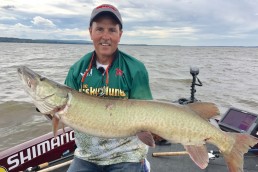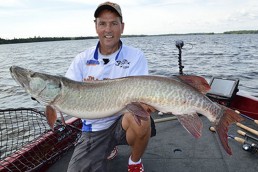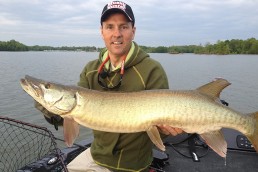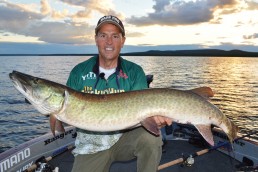Break it up for More Muskies
SHARE THIS POST
One thing that’s a given on any summer muskie trip is following fish. In some waters, it seems as if these fish were hired by the local chamber of commerce to make a routine visit to your boat just to keep you coming back to the lake. No matter how many figure eights you execute, there are just some that won’t bite. But there are also days when the fish seem to follow and follow. Sure, changing speeds with the figure eight and hanging the bait on the turns can trigger a boatside strike. But on these days, rather than solely focusing on the figure eight, I’ll look into how to get these fish to strike away from the boat. After all, given the fact that the muskies are following your lures, you obviously have them engaged. So, it just makes sense to concentrate on your retrieve as much as a figure eight.
It’s easy to get in the habit of “cast and retrieve” and stay in an almost “robotic” fashion. Your thoughts drift to other things, rather than the task at hand: to trigger a strike from a muskie. No matter what the lure, if your retrieve is essentially the same speed throughout or the cadence is not interrupted, you’re more llkely to have muskie follows rather than strikes. It’s hard to pretend there is a fish following your lure on every cast for 10 hours during a long, hot August day. But you have to remain focused on attempting to trigger a strike. Actually, concentrating on varying your retireve each cast will allow you to stay alert and also help you to trigger more strikes. No matter what lure I’m fishing with I make it a point to vary the retrieve during each cast.
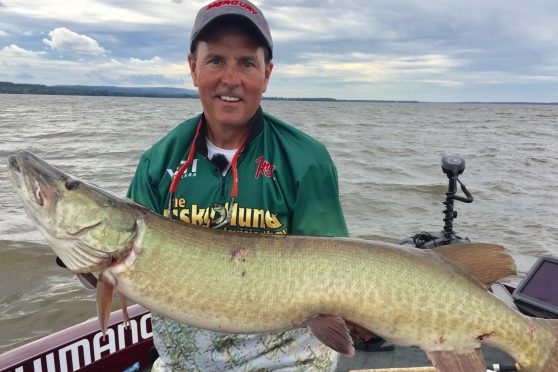
While fishing a bucktail, rather than performing the constant-speed retrieve, every fourth or fifth crank of the reel handle you should accelerate the bait slightly. Believe me, if you’re using a reel such as a Shimano Tranx 400, a couple quick cranks of the reel handle will really make the bait move. This makes the lure speed up, pulse and lift. It’s a subtle change, but if you make one faster crank a few times during each retrieve, it keeps you active in the presentation and a following muskie will strike the bait. The lure makes this slight speed and direction change that’s needed.
Are you enjoying this post?
You can be among the first to get the latest info on where to go, what to use and how to use it!
When fishing a jerkbait, the constant side-to-side or up-down retrieve is used. But it’s extremely important to impart either a pause if you’re fishing the lure fast or a quicker movement if fishing the lure slow. A glider like a soft-tail Phantom will shimmy on the fall and the tail will continue to move; it’s a change in speed and a mid-retrieve trigger. Once again, this subtle variation in speed and lure action can make the difference between a strike and another follow.
Crankbaits and soft plastics can have speed changes imparted mid-retrieve by either ripping the lure with a sharp lift of the rod tip or just a couple fast cranks with the lure. I’ll always impart a slightly different variation within a given cast with each of these lures. When fishing these around weeds or rocks, the natural contact with the cover will impart a natural change in direction and/or speed that will trigger a strike.
Making speed changes within a retrieve is by no means a new concept. But remember it’s easy to get into a rut of casting with the same old mundane pace or retrieve. If the fish are following and you can’t get them to bite on the figure eight, focus on the rest of your cast and, of course, consider switching lures. Muskie fishing is not about follows, but triggering strikes.
MWO
SHARE THIS POST
You may also like...
Did you enjoy this post?
You can be among the first to get the latest info on where to go, what to use and how to use it!
Jim Saric
Jim Saric is a Legendary Angler in the Freshwater Fishing Hall of Fame, the host and executive producer of The Musky Hunter television series, editor at large of Musky Hunter magazine, a seven-time muskie tournament winner, and a contributing writer for numerous other publications.
